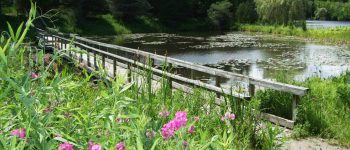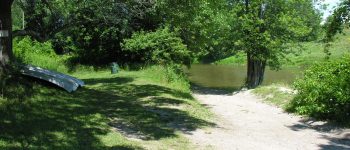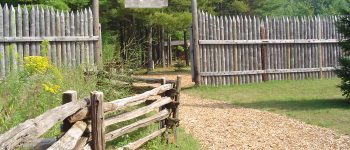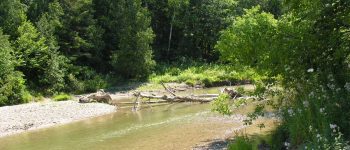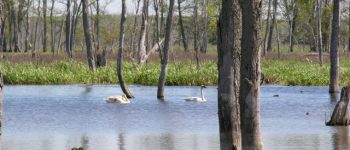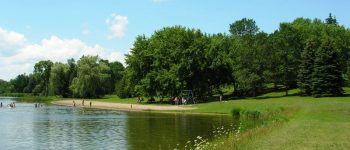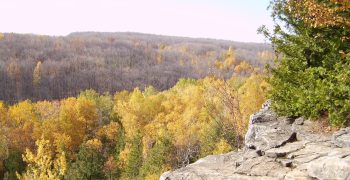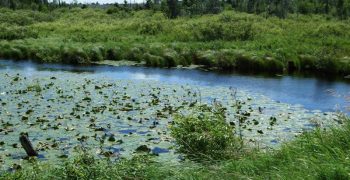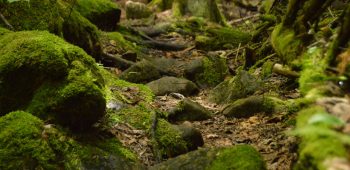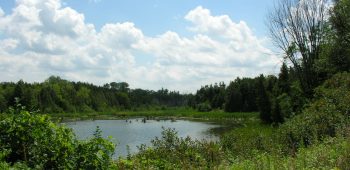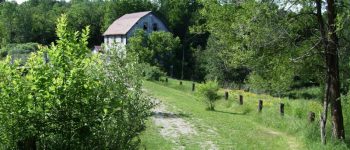Conservation Areas
Recreation in NVCA's Conservation Areas
Spending time in nature is a great way to get exercise and to improve mental health.
The Nottawasaga Valley Conservation Authority offers 11 conservation areas for visitors to explore. While most of the 5,260 hectares (13,000 acres) are considered wilderness areas or natural lands, visitors can experience most of these properties in a variety of ways.
Visitors are welcome to come birding, hiking, play disc golf, hunting, geocaching, snowshoeing, or canoeing at one of our conservation areas. Get kids in touch with nature through one of our education programs. There really is something for everyone!
Please review the tips below to ensure your experience is an enjoyable one.
- NVCA’s conservation areas are open from dawn until dusk, daily. Please check the individual conservation area page, as some locations are closed seasonally.
- To ensure your and your pet’s safety, please keep your dog on a leash when visiting NVCA’s conservation areas.
- Parking fees apply at NVCA’s conservation areas. Please check the individual conservation area page, as some locations are managed by partners and may not be included in NVCA’s annual parking pass.
- Foraging is not permitted within any conservation area.
- Please be prepared when visiting NVCA’s conservation areas. Visiting wilderness areas requires planning and preparation.
Situated between Barrie and Angus, the Tiffin Centre for Conservation is home to the NVCA’s Administration Centre, and the 300+ acre property is a four-season destination for environmental recreation and education.
Found on the banks of the Nottawasaga River in the hamlet of Edenvale, this scenic Conservation Area offers highway travellers a convenient place to rest, picnic, launch their small boat or drop a fishing line.
Hike the surrounding trail network – including the Ganaraska, North Simcoe Rail and Trans Canada trails – and plan to have lunch at the Fort. Amenities include picnic tables, dry washrooms (including wheelchair-accessible) and sheltered rest areas.
Located in the village of Glencairn, this pleasant area offers a scenic getaway for an hour or the entire day. The Mad River winds through offering opportunities for fishing, short hikes and simple relaxation.
Recreational visitors can enjoy canoeing, bird watching, snowshoeing and more.
Not suitable for those who have little to no paddling experience. We recommend going with an experienced guide if you do not know your way around Minesing Wetlands,
New Lowell offers a beautifully kept seasonal campground and a day-use park. The large wooded sites have hydro and water, two clean sandy beaches, and a large reservoir for fishing, paddle boating or canoeing.
Explore the Niagara Escarpment with a hike through the caves, hardwood and coniferous forests, and open meadows of the Nottawasaga Bluffs.
This 400-acre conservation area offers a full day of exploration and adventure, with breathtaking vistas of the surrounding countryside and glimpses of the area’s history.
Supplying base flow waters to the Saugeen, Beaver, Mad and Grand River systems, the Osprey Wetlands span an area of over 6,500 acres.
The wetlands are an ideal spot to see by snowshoe or cross-country ski during the winter months. There are picnic tables but no outhouses on site.
As part of the Niagara Escarpment’s World Biosphere Reserve, this 100-acre site gives visitors endless opportunities to hike the Bruce Trail as it winds its way through a myriad of rock faces, cliffs and crevices. Unique fern and moss communities make for an interesting day of exploring.
Tottenham Conservation Area consists of a large parkland overlooking a picturesque pond. The large sandy beach and pavilion are ideal for a wide range of summer activities. The park offers camping facilities, fishing, nature trails, and a secluded pavilion that can be reserved for private functions.
This 100-acre area is used as passive green space. A portion of the property where the 140-year-old Bell’s Gristmill resides is leased to the Friends of Utopia Gristmill & Park for purposes of conservation and restoration.
About NVCA’s Conservation Areas
Conservation areas are owned and managed by conservation authorities. These lands were established to conserve important watershed resources such as floodplains, valleylands, wetlands, forest regeneration areas, and water management structures. Conservation Authority lands are mainly purchased for their environmental significance. For example, NVCA has purchased environmentally significant lands in the Minesing and Osprey Wetlands.
Originally, the purpose of conservation lands was to limit soil erosion in rivers and streams, and to protect lives and properties against flood hazards. These historic actions are now proving to have long-term, wide-ranging benefits.
Public conservation lands are important to many watershed residents as they provide opportunities for recreation, education, and environmental conservation and protection. Managing land also ensures ecosystem integrity and provides recreation opportunities.
Photography Permits
Photography for personal enjoyment is permitted and encouraged in all NVCA public conservation areas.
If you are a professional photographer or are planning to come to one of our conservation areas for a professional photo shoot, you may be required to purchase a photography permit before you enter the area.
The proceeds from the sale of NVCA’s Photography Permits goes directly to the Conservation Lands programs and maintenance of NVCA’s conservation areas.
Please stay on the trails and respect all postings with regards to trail or area closures.
For photography permit fees, please call 705-424-1479 x 236 on Monday to Friday between 8:30 am and 4:30 pm or email lands@nvca.on.ca.
